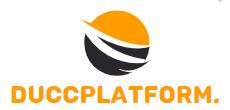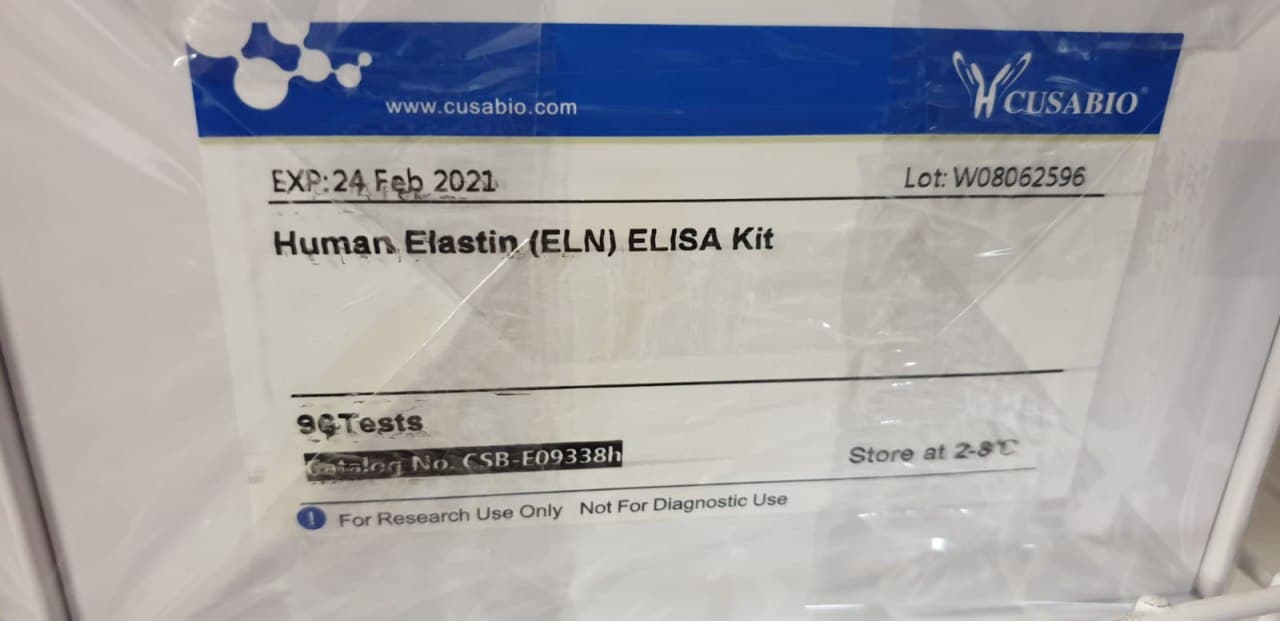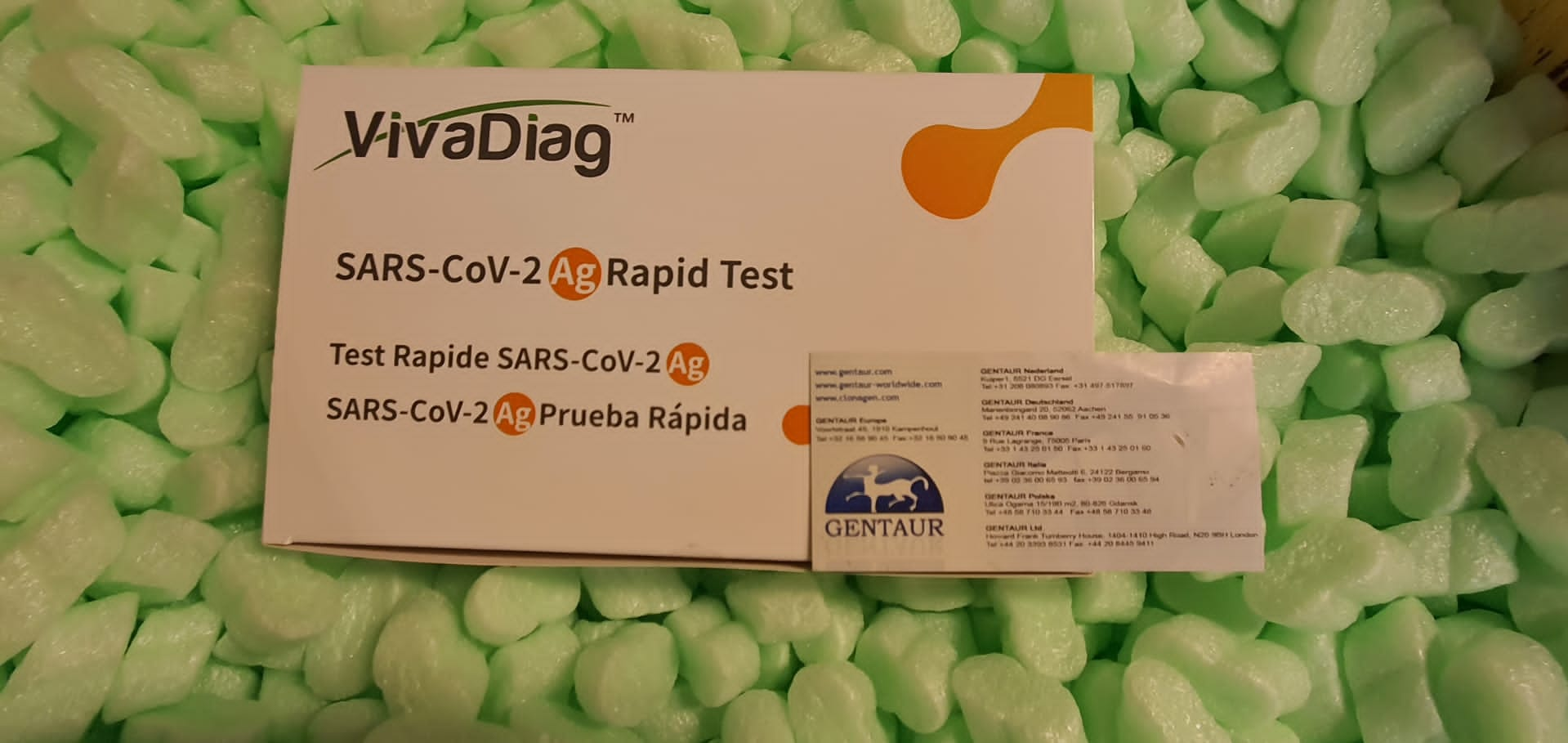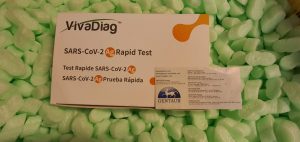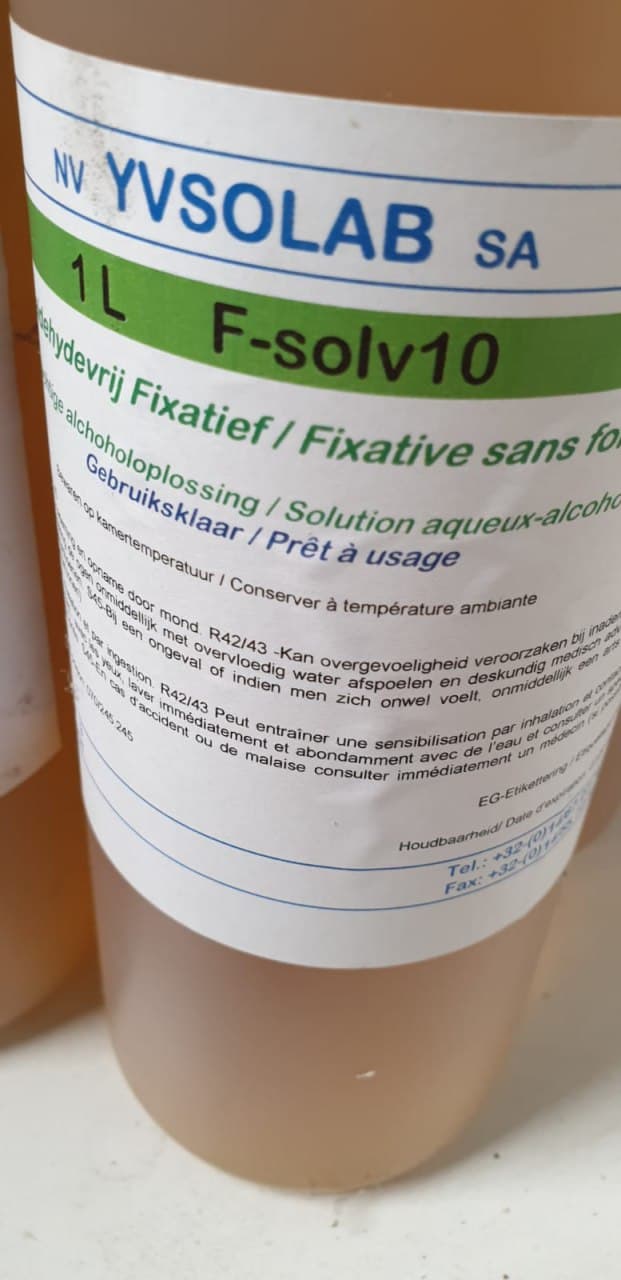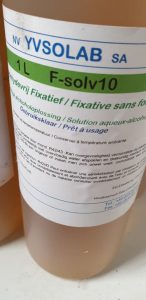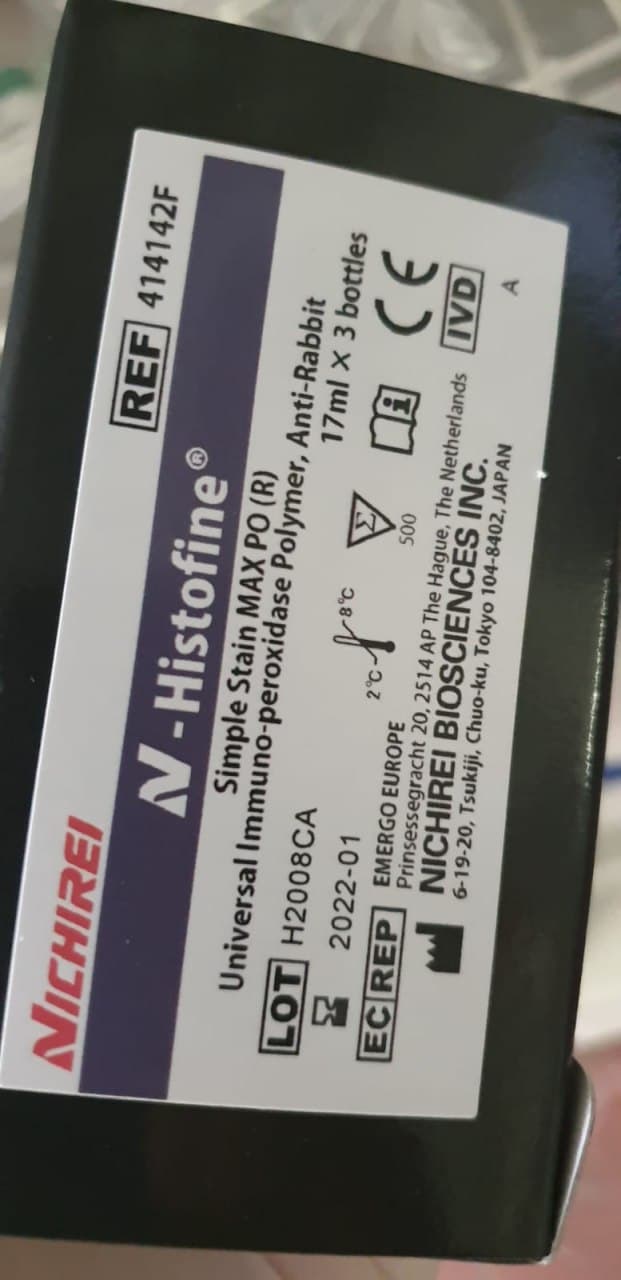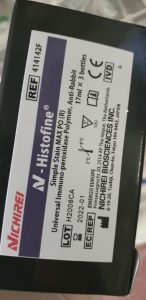The National Toxicology Program (NTP) Center for the Evaluation of Risks to Human Reproduction (CERHR) carried out an analysis of the potential for bisphenol A to trigger opposed results on copy and growth in people. The CERHR Expert Panel on Bisphenol A accomplished its analysis in August 2007. CERHR chosen bisphenol A for analysis as a result of of the: widespread human publicity; public concern for doable well being results from human exposures; high manufacturing quantity; proof of reproductive and developmental toxicity in laboratory animal research Bisphenol A (CAS RN: 80-05-7) is a high manufacturing quantity chemical used primarily in the manufacturing of polycarbonate plastics and epoxy resins.
Polycarbonate plastics are used in some meals and drink containers; the resins are used as lacquers to coat steel merchandise similar to meals cans, bottle tops, and water provide pipes. To a lesser extent bisphenol A is used in the manufacturing of polyester resins, polysulfone resins, polyacrylate resins, and flame retardants. In addition, bisphenol A is used in the processing of polyvinyl chloride plastic and in the recycling of thermal paper. Some polymers used in dental sealants and tooth coatings comprise bisphenol A. The major supply of publicity to bisphenol A for most individuals is assumed to happen via the food regimen.
While air, mud, and water (including pores and skin contact throughout bathing and swimming) are different doable sources of publicity, bisphenol A in meals and drinks accounts for the majority of each day human publicity. The highest estimated each day intakes of bisphenol A in the common inhabitants happen in infants and youngsters. The outcomes of this bisphenol A analysis are printed in an NTP-CERHR Monograph that consists of the (1) NTP Brief and (2) Expert Panel Report on the Reproductive and Developmental Toxicity of Bisphenol A. Additional info associated to the analysis course of, including the peer overview report for the NTP Brief and public feedback acquired on the draft NTP Brief and the closing knowledgeable panel report.
See bisphenol A below “CERHR Chemicals” on the homepage. The NTP reached the following conclusions on the doable results of publicity to bisphenol A on human growth and copy. Note that the doable ranges of concern, from lowest to highest, are negligible concern, minimal concern, some concern, concern, and critical concern. The NTP has some concern for results on the mind, habits, and prostate gland in fetuses, infants, and youngsters at present human exposures to bisphenol A. The NTP has minimal concern for results on the mammary gland and an earlier age for puberty for females in fetuses, infants, and youngsters at present human exposures to bisphenol A.
The NTP has negligible concern that publicity of pregnant girls to bisphenol A will outcome in fetal or neonatal mortality, beginning defects, or lowered beginning weight and development in their offspring. The NTP has negligible concern that publicity to bisphenol A will trigger reproductive results in non-occupationally uncovered adults and minimal concern for staff uncovered to larger ranges in occupational settings.
Myocardial calcium and magnesium in acute ischemic damage.
The impact of ischemic damage on calcium and magnesium distribution in canine myocardial cells was investigated in tissue broken by occlusion of the circumflex department of the left coronary artery for 60 minutes or for 40 minutes adopted by 20 minutes of reperfusion of the broken tissue by arterial blood. No vital change in the focus of these cations was famous in completely ischemic, irreversibly injured myocardial cells, however tissue calcium was markedly elevated in cells killed by an episode of transient ischemia. Tissue water and sodium additionally have been elevated and magnesium was decreased considerably in the transient ischemia mannequin.
Investigation of the localization of the elevated Ca(–) by cellular fractionation and chemical evaluation in addition to by electron miscroscopy and microincineration confirmed that a lot of it was localized in dense our bodies within the mitochondria. Within the intramitochondrial dense our bodies, the calcium appeared to be a precipitate of an as but undefined kind of calcium phosphate. Dormant Bacillus subtilis spores can be induced to germinate by vitamins, in addition to by nonmetabolizable chemical compounds, similar to a 1:1 chelate of Ca(2+) and dipicolinic acid (DPA).
Nutrients bind receptors in the spore, and this binding triggers occasions in the spore core, including DPA excretion and rehydration, and additionally prompts hydrolysis of the surrounding cortex via mechanisms that are largely unknown. As Ca(2+)-DPA doesn’t require receptors to induce spore germination, we requested if this course of makes use of different proteins, similar to the putative cortex-lytic enzymes SleB and CwlJ, that are concerned in nutrient-induced germination.
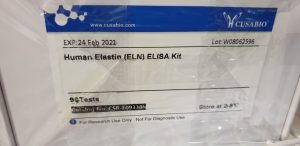
The transient receptor potential channel TRPA1: from gene to pathophysiology.
The Transient Receptor Potential Ankyrin 1 channel (TRPA1), is a member of the massive TRP household of ion channels, and features as a Ca(2+) permeable non-selective cation channel in many alternative cell processes, starting from sensory to homeostatic duties. TRPA1 is extremely conserved throughout the animal kingdom. The solely mammalian TRPA subfamily member, TRPA1, is extensively expressed in neuronal (e.g. sensory dorsal root and trigeminal ganglia neurons)- and in non-neuronal cells (e.g. epithelial cells, hair cells). It reveals 14-19 amino-(N-)terminal ankyrin repeats, an uncommon structural function.
 Caspase-2 Fluorometric Assay Kit - 25 assays |
|
GWB-AXR050 |
GenWay Biotech |
25 assays |
Ask for price |
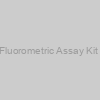 Caspase-9 Fluorometric Assay Kit - 25 assays |
|
GWB-AXR058 |
GenWay Biotech |
25 assays |
Ask for price |
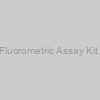 Caspase-5 Fluorometric Assay Kit - 25 assays |
|
GWB-AXR068 |
GenWay Biotech |
25 assays |
Ask for price |
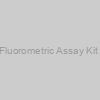 Caspase-4 Fluorometric Assay Kit - 25 assays |
|
GWB-AXR085 |
GenWay Biotech |
25 assays |
Ask for price |
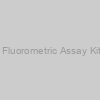 Caspase-10 Fluorometric Assay Kit - 25 assays |
|
GWB-AXR076 |
GenWay Biotech |
25 assays |
Ask for price |
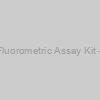 Caspase-6 Fluorometric Assay Kit - 100 assays |
|
GWB-AXR040 |
GenWay Biotech |
100 assays |
Ask for price |
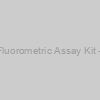 Caspase-6 Fluorometric Assay Kit - 200 assays |
|
GWB-AXR041 |
GenWay Biotech |
200 assays |
Ask for price |
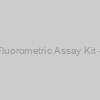 Caspase-6 Fluorometric Assay Kit - 400 assays |
|
GWB-AXR043 |
GenWay Biotech |
400 assays |
Ask for price |
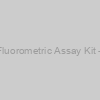 Caspase-3 Fluorometric Assay Kit - 100 assays |
|
GWB-AXR013 |
GenWay Biotech |
100 assays |
Ask for price |
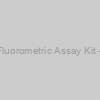 Caspase-3 Fluorometric Assay Kit - 200 assays |
|
GWB-AXR014 |
GenWay Biotech |
200 assays |
Ask for price |
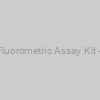 Caspase-3 Fluorometric Assay Kit - 400 assays |
|
GWB-AXR016 |
GenWay Biotech |
400 assays |
Ask for price |
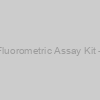 Caspase-1 Fluorometric Assay Kit - 100 assays |
|
GWB-AXR024 |
GenWay Biotech |
100 assays |
Ask for price |
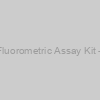 Caspase-1 Fluorometric Assay Kit - 200 assays |
|
GWB-AXR025 |
GenWay Biotech |
200 assays |
Ask for price |
 Caspase-1 Fluorometric Assay Kit - 400 assays |
|
GWB-AXR027 |
GenWay Biotech |
400 assays |
Ask for price |
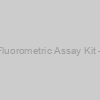 Caspase-8 Fluorometric Assay Kit - 100 assays |
|
GWB-AXR032 |
GenWay Biotech |
100 assays |
Ask for price |
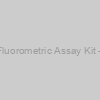 Caspase-8 Fluorometric Assay Kit - 200 assays |
|
GWB-AXR033 |
GenWay Biotech |
200 assays |
Ask for price |
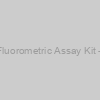 Caspase-8 Fluorometric Assay Kit - 400 assays |
|
GWB-AXR035 |
GenWay Biotech |
400 assays |
Ask for price |
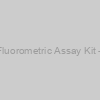 Caspase-2 Fluorometric Assay Kit - 100 assays |
|
GWB-AXR048 |
GenWay Biotech |
100 assays |
Ask for price |
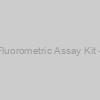 Caspase-2 Fluorometric Assay Kit - 200 assays |
|
GWB-AXR049 |
GenWay Biotech |
200 assays |
Ask for price |
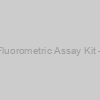 Caspase-2 Fluorometric Assay Kit - 400 assays |
|
GWB-AXR051 |
GenWay Biotech |
400 assays |
Ask for price |
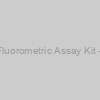 Caspase-9 Fluorometric Assay Kit - 100 assays |
|
GWB-AXR056 |
GenWay Biotech |
100 assays |
Ask for price |
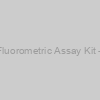 Caspase-9 Fluorometric Assay Kit - 200 assays |
|
GWB-AXR057 |
GenWay Biotech |
200 assays |
Ask for price |
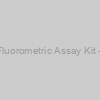 Caspase-9 Fluorometric Assay Kit - 400 assays |
|
GWB-AXR059 |
GenWay Biotech |
400 assays |
Ask for price |
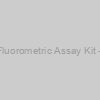 Caspase-5 Fluorometric Assay Kit - 100 assays |
|
GWB-AXR066 |
GenWay Biotech |
100 assays |
Ask for price |
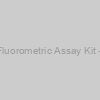 Caspase-5 Fluorometric Assay Kit - 200 assays |
|
GWB-AXR067 |
GenWay Biotech |
200 assays |
Ask for price |
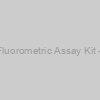 Caspase-5 Fluorometric Assay Kit - 400 assays |
|
GWB-AXR069 |
GenWay Biotech |
400 assays |
Ask for price |
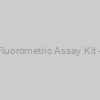 Caspase-4 Fluorometric Assay Kit - 400 assays |
|
GWB-AXR082 |
GenWay Biotech |
400 assays |
Ask for price |
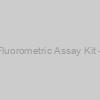 Caspase-4 Fluorometric Assay Kit - 100 assays |
|
GWB-AXR083 |
GenWay Biotech |
100 assays |
Ask for price |
 Caspase-4 Fluorometric Assay Kit - 100 assays |
|
GWB-AXR084 |
GenWay Biotech |
100 assays |
Ask for price |
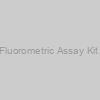 Caspase-10 Fluorometric Assay Kit - 100 assays |
|
GWB-AXR074 |
GenWay Biotech |
100 assays |
Ask for price |
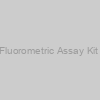 Caspase-10 Fluorometric Assay Kit - 200 assays |
|
GWB-AXR075 |
GenWay Biotech |
200 assays |
Ask for price |
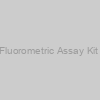 Caspase-10 Fluorometric Assay Kit - 400 assays |
|
GWB-AXR077 |
GenWay Biotech |
400 assays |
Ask for price |
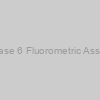 Caspase 6 Fluorometric Assay Kit |
|
55R-1276 |
Fitzgerald |
25 assays |
EUR 467 |
|
|
|
Description: Assay Kit for detection of Capase 6 activity in the research laboratory |
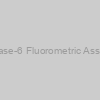 Caspase-6 Fluorometric Assay Kit |
|
K2014-100 |
ApexBio |
100 assays |
EUR 322 |
|
Description: Detects VEID-dependent caspase activity, highly-sensitive. |
 Caspase-6 Fluorometric Assay Kit |
|
K2014-200 |
ApexBio |
200 assays |
EUR 492 |
|
Description: Detects VEID-dependent caspase activity, highly-sensitive. |
 Caspase-6 Fluorometric Assay Kit |
|
K2014-25 |
ApexBio |
25 assays |
EUR 143 |
|
Description: Detects VEID-dependent caspase activity, highly-sensitive. |
 Caspase-6 Fluorometric Assay Kit |
|
K2014-400 |
ApexBio |
400 assays |
EUR 789 |
|
Description: Detects VEID-dependent caspase activity, highly-sensitive. |
 Caspase-6 Fluorometric Assay Kit |
|
K114-100 |
Biovision |
each |
EUR 516 |
 Caspase-6 Fluorometric Assay Kit |
|
K114-200 |
Biovision |
each |
EUR 738 |
 Caspase-6 Fluorometric Assay Kit |
|
K114-25 |
Biovision |
each |
EUR 242.4 |
 Caspase-6 Fluorometric Assay Kit |
|
K114-400 |
Biovision |
each |
EUR 1149.6 |
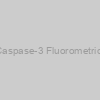 GWB-AXR013-100T - Caspase-3 Fluorometric Assay Kit - 100 assays |
|
GWB-AXR013-100T |
Aviva Systems Biology |
100assays |
EUR 629 |
|
|
) Caspase-8 IETD-R110 Fluorometric and Colorimetric Assay Kit (25 assays) |
|
30011-1 |
Biotium |
1KIT |
EUR 244.8 |
|
Description: Minimum order quantity: 1 unit of 1KIT |
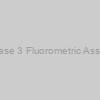 Caspase 3 Fluorometric Assay Kit |
|
55R-1269 |
Fitzgerald |
25 assays |
EUR 527 |
|
|
|
Description: Assay Kit for detection of Capase 3 activity in the research laboratory |
 Caspase 1 Fluorometric Assay Kit |
|
55R-1272 |
Fitzgerald |
25 assays |
EUR 527 |
|
|
|
Description: Assay Kit for detection of Capase 1 activity in the research laboratory |
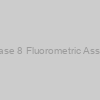 Caspase 8 Fluorometric Assay Kit |
|
55R-1274 |
Fitzgerald |
25 assays |
EUR 527 |
|
|
|
Description: Assay Kit for detection of Capase 8 activity in the research laboratory |
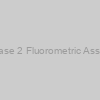 Caspase 2 Fluorometric Assay Kit |
|
55R-1278 |
Fitzgerald |
25 assays |
EUR 507 |
|
|
|
Description: Assay Kit for detection of Capase 2 activity in the research laboratory |
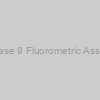 Caspase 9 Fluorometric Assay Kit |
|
55R-1280 |
Fitzgerald |
25 assays |
EUR 513 |
|
|
|
Description: Assay Kit for detection of Capase 9 activity in the research laboratory |
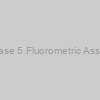 Caspase 5 Fluorometric Assay Kit |
|
55R-1282 |
Fitzgerald |
25 assays |
EUR 473 |
|
|
|
Description: Assay Kit for detection of Capase 5 activity in the research laboratory |
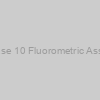 Caspase 10 Fluorometric Assay Kit |
|
55R-1284 |
Fitzgerald |
25 assays |
EUR 507 |
|
|
|
Description: Assay Kit for detection of Capase 10 activity in the research laboratory |
 Caspase 4 Fluorometric Assay Kit |
|
55R-1286 |
Fitzgerald |
25 assays |
EUR 513 |
|
|
|
Description: Assay Kit for detection of Capase 4 activity in the research laboratory |
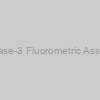 Caspase-3 Fluorometric Assay Kit |
|
K2007-100 |
ApexBio |
100 assays |
EUR 322 |
|
Description: Detects DEVD-dependent caspase activity, highly-sensitive. |
 Caspase-3 Fluorometric Assay Kit |
|
K2007-200 |
ApexBio |
200 assays |
EUR 469 |
|
Description: Detects DEVD-dependent caspase activity, highly-sensitive. |
 Caspase-3 Fluorometric Assay Kit |
|
K2007-25 |
ApexBio |
25 assays |
EUR 143 |
|
Description: Detects DEVD-dependent caspase activity, highly-sensitive. |
 Caspase-3 Fluorometric Assay Kit |
|
K2007-400 |
ApexBio |
400 assays |
EUR 789 |
|
Description: Detects DEVD-dependent caspase activity, highly-sensitive. |
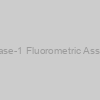 Caspase-1 Fluorometric Assay Kit |
|
K2010-100 |
ApexBio |
100 assays |
EUR 586 |
|
Description: Detects YVAD-dependent caspase activity, highly-sensitive. |
 Caspase-1 Fluorometric Assay Kit |
|
K2010-200 |
ApexBio |
200 assays |
EUR 835.2 |
 Caspase-1 Fluorometric Assay Kit |
|
K2010-25 |
ApexBio |
25 assays |
EUR 285.6 |
 Caspase-1 Fluorometric Assay Kit |
|
K2010-400 |
ApexBio |
400 assays |
EUR 1303.2 |
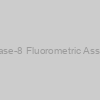 Caspase-8 Fluorometric Assay Kit |
|
K2012-100 |
ApexBio |
100 assays |
EUR 322 |
|
Description: Detects IETD-dependent caspase activity, highly-sensitive. |
 Caspase-8 Fluorometric Assay Kit |
|
K2012-200 |
ApexBio |
200 assays |
EUR 492 |
|
Description: Detects IETD-dependent caspase activity, highly-sensitive. |
 Caspase-8 Fluorometric Assay Kit |
|
K2012-25 |
ApexBio |
25 assays |
EUR 143 |
|
Description: Detects IETD-dependent caspase activity, highly-sensitive. |
 Caspase-8 Fluorometric Assay Kit |
|
K2012-400 |
ApexBio |
400 assays |
EUR 789 |
|
Description: Detects IETD-dependent caspase activity, highly-sensitive. |
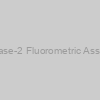 Caspase-2 Fluorometric Assay Kit |
|
K2016-100 |
ApexBio |
100 assays |
EUR 571 |
|
Description: Detects VDVAD-dependent caspase activity, highly-sensitive. |
 Caspase-2 Fluorometric Assay Kit |
|
K2016-200 |
ApexBio |
200 assays |
EUR 835.2 |
 Caspase-2 Fluorometric Assay Kit |
|
K2016-25 |
ApexBio |
25 assays |
EUR 285.6 |
 Caspase-2 Fluorometric Assay Kit |
|
K2016-400 |
ApexBio |
400 assays |
EUR 1336.8 |
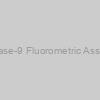 Caspase-9 Fluorometric Assay Kit |
|
K2018-100 |
ApexBio |
100 assays |
EUR 571 |
|
Description: Detects LEHD-dependent caspase activity, highly-sensitive. |
 Caspase-9 Fluorometric Assay Kit |
|
K2018-200 |
ApexBio |
200 assays |
EUR 802.8 |
 Caspase-9 Fluorometric Assay Kit |
|
K2018-25 |
ApexBio |
25 assays |
EUR 285.6 |
 Caspase-9 Fluorometric Assay Kit |
|
K2018-400 |
ApexBio |
400 assays |
EUR 1336.8 |
 Caspase-3 Fluorometric Assay Kit |
|
K105-100 |
Biovision |
each |
EUR 574.8 |
 Caspase-3 Fluorometric Assay Kit |
|
K105-200 |
Biovision |
each |
EUR 744 |
 Caspase-3 Fluorometric Assay Kit |
|
K105-25 |
Biovision |
each |
EUR 248.4 |
 Caspase-3 Fluorometric Assay Kit |
|
K105-400 |
Biovision |
each |
EUR 1174.8 |
 Caspase-9 Fluorometric Assay Kit |
|
K118-100 |
Biovision |
each |
EUR 561.6 |
 Caspase-9 Fluorometric Assay Kit |
|
K118-200 |
Biovision |
each |
EUR 738 |
 Caspase-9 Fluorometric Assay Kit |
|
K118-25 |
Biovision |
each |
EUR 248.4 |
 Caspase-9 Fluorometric Assay Kit |
|
K118-400 |
Biovision |
each |
EUR 1149.6 |
 Caspase-8 Fluorometric Assay Kit |
|
K112-100 |
Biovision |
each |
EUR 574.8 |
 Caspase-8 Fluorometric Assay Kit |
|
K112-200 |
Biovision |
each |
EUR 738 |
 Caspase-8 Fluorometric Assay Kit |
|
K112-25 |
Biovision |
each |
EUR 248.4 |
 Caspase-8 Fluorometric Assay Kit |
|
K112-400 |
Biovision |
each |
EUR 1149.6 |
 Caspase-2 Fluorometric Assay Kit |
|
K116-100 |
Biovision |
each |
EUR 555.6 |
 Caspase-2 Fluorometric Assay Kit |
|
K116-200 |
Biovision |
each |
EUR 738 |
 Caspase-2 Fluorometric Assay Kit |
|
K116-25 |
Biovision |
each |
EUR 242.4 |
 Caspase-2 Fluorometric Assay Kit |
|
K116-400 |
Biovision |
each |
EUR 1149.6 |
 Caspase-1 Fluorometric Assay Kit |
|
K110-100 |
Biovision |
each |
EUR 574.8 |
 Caspase-1 Fluorometric Assay Kit |
|
K110-200 |
Biovision |
each |
EUR 744 |
 Caspase-1 Fluorometric Assay Kit |
|
K110-25 |
Biovision |
each |
EUR 248.4 |
 Caspase-1 Fluorometric Assay Kit |
|
K110-400 |
Biovision |
each |
EUR 1149.6 |
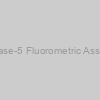 Caspase-5 Fluorometric Assay Kit |
|
K122-100 |
Biovision |
each |
EUR 523.2 |
 Caspase-5 Fluorometric Assay Kit |
|
K122-200 |
Biovision |
each |
EUR 698.4 |
 Caspase-5 Fluorometric Assay Kit |
|
K122-25 |
Biovision |
each |
EUR 242.4 |
 Caspase-5 Fluorometric Assay Kit |
|
K122-400 |
Biovision |
each |
EUR 1149.6 |
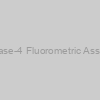 Caspase-4 Fluorometric Assay Kit |
|
K126-100 |
Biovision |
each |
EUR 561.6 |
 Caspase-4 Fluorometric Assay Kit |
|
K126-200 |
Biovision |
each |
EUR 738 |
 Caspase-4 Fluorometric Assay Kit |
|
K126-25 |
Biovision |
each |
EUR 255.6 |
 Caspase-4 Fluorometric Assay Kit |
|
K126-400 |
Biovision |
each |
EUR 1110 |
 Caspase-5 Fluorometric Assay Kit |
|
K2195-100 |
ApexBio |
100 assays |
EUR 571 |
|
Description: Convenient, Highly-Sensitive Assay. |
 Caspase-5 Fluorometric Assay Kit |
|
K2195-200 |
ApexBio |
200 assays |
EUR 835.2 |
 Caspase-5 Fluorometric Assay Kit |
|
K2195-25 |
ApexBio |
25 assays |
EUR 285.6 |
 Caspase-5 Fluorometric Assay Kit |
|
K2195-400 |
ApexBio |
400 assays |
EUR 1336.8 |
 Caspase-4 Fluorometric Assay Kit |
|
K2198-100 |
ApexBio |
100 assays |
EUR 562 |
|
Description: Convenient, Highly-Sensitive Assay. |
 Caspase-4 Fluorometric Assay Kit |
|
K2198-200 |
ApexBio |
200 assays |
EUR 885.6 |
 Caspase-4 Fluorometric Assay Kit |
|
K2198-25 |
ApexBio |
25 assays |
EUR 301.2 |
 Caspase-4 Fluorometric Assay Kit |
|
K2198-400 |
ApexBio |
400 assays |
EUR 1336.8 |
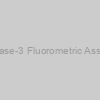 Caspase-3 Fluorometric Assay kit |
|
TBS2035 |
Tribioscience |
100 tests |
EUR 289 |
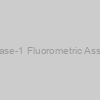 Caspase-1 Fluorometric Assay kit |
|
TBS2045 |
Tribioscience |
100 tests |
EUR 289 |
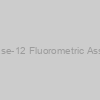 Caspase-12 Fluorometric Assay Kit |
|
GWB-AXR105 |
GenWay Biotech |
100 assays |
Ask for price |
 Caspase-12 Fluorometric Assay Kit |
|
GWB-AXR106 |
GenWay Biotech |
25 assays |
Ask for price |
 Caspase-12 Fluorometric Assay Kit |
|
K139-100 |
Biovision |
each |
EUR 601.2 |
 Caspase-12 Fluorometric Assay Kit |
|
K139-25 |
Biovision |
each |
EUR 307.2 |
 Caspase-10 Fluorometric Assay Kit |
|
K124-100 |
Biovision |
each |
EUR 529.2 |
 Caspase-10 Fluorometric Assay Kit |
|
K124-200 |
Biovision |
each |
EUR 738 |
 Caspase-10 Fluorometric Assay Kit |
|
K124-25 |
Biovision |
each |
EUR 242.4 |
 Caspase-10 Fluorometric Assay Kit |
|
K124-400 |
Biovision |
each |
EUR 1149.6 |
 Caspase-12 Fluorometric Assay Kit |
|
K2150-100 |
ApexBio |
100 assays |
EUR 571 |
|
Description: Detects ATAD-dependent caspase-12 activity, highly sensitive. |
 Caspase-12 Fluorometric Assay Kit |
|
K2150-25 |
ApexBio |
25 assays |
EUR 301.2 |
) Caspase-3 DEVD-R110 Fluorometric and Colorimetric Assay Kit (100 assays) |
|
30008-2 |
Biotium |
1KIT |
EUR 459.6 |
|
Description: Minimum order quantity: 1 unit of 1KIT |
) Caspase-8 IETD-R110 Fluorometric and Colorimetric Assay Kit (100 assays) |
|
30011-2 |
Biotium |
1KIT |
EUR 459.6 |
|
Description: Minimum order quantity: 1 unit of 1KIT |
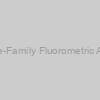 Caspase-Family Fluorometric Assay kit |
|
TBS2055 |
Tribioscience |
9x25 tests |
EUR 589 |
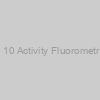 Caspase-8, 10 Activity Fluorometric Assay Kit |
|
RP10238K |
Abclonal |
1kit |
EUR 552.5 |
|
|
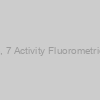 Caspase-3, 7 Activity Fluorometric Assay Kit |
|
RP10240K |
Abclonal |
1kit |
EUR 552.5 |
|
|
) Caspase-3 Activity Assay Kit II (Fluorometric) |
|
K533-100 |
Biovision |
each |
EUR 614.4 |
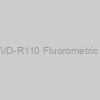 Caspase-3 DEVD-R110 Fluorometric HTS Assay Kit |
|
30009-1 |
Biotium |
1KIT |
EUR 56 |
|
|
|
Description: N/A |
 Caspase-3 DEVD-R110 Fluorometric HTS Assay Kit |
|
30009-1-1 |
Biotium |
KT |
EUR 56 |
 Caspase-3 DEVD-R110 Fluorometric HTS Assay Kit |
|
30009-2 |
Biotium |
1KIT |
EUR 199 |
|
|
|
Description: N/A |
 Caspase-3 DEVD-R110 Fluorometric HTS Assay Kit |
|
30009-2-1 |
Biotium |
KT |
EUR 199 |
 Caspase-3 DEVD-R110 Fluorometric HTS Assay Kit |
|
30009-3 |
Biotium |
1KIT |
EUR 854 |
|
|
|
Description: N/A |
 Caspase-3 DEVD-R110 Fluorometric HTS Assay Kit |
|
30009-3-1 |
Biotium |
KT |
EUR 854 |
 Caspase-8 IETD-R110 Fluorometric HTS Assay Kit |
|
30012-1 |
Biotium |
1KIT |
EUR 120 |
|
Description: Minimum order quantity: 1 unit of 1KIT |
 Caspase-8 IETD-R110 Fluorometric HTS Assay Kit |
|
30012-2 |
Biotium |
1KIT |
EUR 429.6 |
|
Description: Minimum order quantity: 1 unit of 1KIT |
 Caspase-8 IETD-R110 Fluorometric HTS Assay Kit |
|
30012-3 |
Biotium |
1KIT |
EUR 1952.4 |
|
Description: Minimum order quantity: 1 unit of 1KIT |
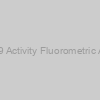 Caspae-9 Activity Fluorometric Assay Kit |
|
RP10239K |
Abclonal |
1kit |
EUR 552.5 |
|
|
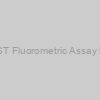 GST Fluorometric Assay Kit |
|
55R-1350 |
Fitzgerald |
100 assays |
EUR 513 |
|
|
|
Description: Assay Kit for detection of GST activity in the research laboratory |
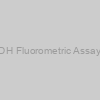 NADH Fluorometric Assay Kit |
|
K2037-100 |
ApexBio |
100 assays |
EUR 557 |
|
Description: Detects NADH, highly sensitive. |
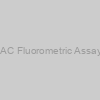 HDAC Fluorometric Assay kit |
|
TBS2060 |
Tribioscience |
100 tests |
EUR 289 |
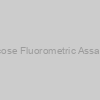 Glucose Fluorometric Assay Kit |
|
K2221-100 |
ApexBio |
100 assays |
EUR 571 |
|
Description: Detects glucose, highly sensitive, high throughput screening (HTS). |
 Lactate Fluorometric Assay Kit |
|
K2140-100 |
ApexBio |
100 assays |
EUR 586 |
|
Description: Detects lactate, highly sensitive, high throughput screening (HTS). |
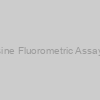 Inosine Fluorometric Assay Kit |
|
K712-100 |
Biovision |
each |
EUR 639.6 |
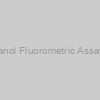 Ethanol Fluorometric Assay kit |
|
TBS2095 |
Tribioscience |
100 tests |
EUR 259 |
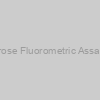 Sucrose Fluorometric Assay Kit |
|
E-BC-F042-96T |
Elabscience Biotech |
96T |
EUR 350 |
|
|
|
Description: Quantitative |
 Sucrose Fluorometric Assay Kit |
|
E-BC-F042-each |
Elabscience Biotech |
each |
Ask for price |
|
|
|
Description: Quantitative |
 Glucose-6-Phosphate Fluorometric Assay Kit |
|
K2220-100 |
ApexBio |
100 assays |
EUR 600 |
|
Description: Detects glucose-6-phosphate, highly sensitive. |
 Glycogen Fluorometric Assay Kit |
|
E-BC-F040-500Assays |
Elabscience Biotech |
500 Assays |
EUR 1000 |
|
|
|
Description: Quantitative |
 Glycogen Fluorometric Assay Kit |
|
E-BC-F040-96T |
Elabscience Biotech |
96T |
EUR 425 |
|
|
|
Description: Quantitative |
 Glycogen Fluorometric Assay Kit |
|
E-BC-F040-each |
Elabscience Biotech |
each |
Ask for price |
|
|
|
Description: Quantitative |
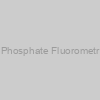 Fructose-6-Phosphate Fluorometric Assay Kit |
|
K2222-100 |
ApexBio |
100 assays |
EUR 466 |
|
Description: Detects fructose-6-phosphate, highly sensitive. |
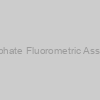 Phosphate Fluorometric Assay Kit |
|
55R-1404 |
Fitzgerald |
100 assays |
EUR 367 |
|
|
|
Description: Assay Kit for detection of Phosphate in the research laboratory |
 Phosphate Fluorometric Assay Kit |
|
GWB-AXR232 |
GenWay Biotech |
100 assays |
Ask for price |
 Citrulline Fluorometric Assay Kit |
|
K2002-100 |
Biovision |
each |
EUR 744 |
) Zinc Assay Kit (Fluorometric) |
|
K428-100 |
Biovision |
each |
EUR 627.6 |
The TRPA1 channel is activated by noxious chilly (<17 °C) in addition to by a plethora of chemical compounds that consists of not solely electrophilic compounds and oxidants that can modify, in an alkylative or oxidative vogue, nucleophilic cysteine residues in the channel’s N-terminus, but in addition compounds that don’t covalently bind to the channel proteins (e.g. menthol, nifedipin). Based on localization and purposeful properties, TRPA1 is thought-about a key participant in acute and power (neuropathic) ache and irritation. Moreover, its position in the (patho)physiology of practically all organ methods is anticipated, and will be mentioned alongside with the potential of TRPA1 as a drug goal for the administration of numerous pathological circumstances.

